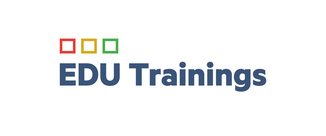Detail kurzu
CM300 – Content Manager Installation Essentials
EDU Trainings s.r.o.
Popis kurzu
This two-day administrator-level course covers the installation of a Content Manager. It discusses the Content Manager installation preparation, Content Manager installation, Enterprise Studio configuration, dataset restoration, and upgrade, IDOL/ElasticSearch Indexing, content rendering, the Web Client, and additional workgroup server configuration and maintenance.
The course equips designated CM business administrators with the understanding required to plan and design a system to meet their enterprise needs.
This course is intended for users responsible for the setup and initial design of Content Manager; including, but not limited to, Records Managers, Senior Business Staff, Power Users, and/or Core Project Team Members.
NOTE: A new ART (Digital Learning) module has been added to this ILT course to cover new functionalities and enhancement from an Administrator perspective.
Students can launch this web-based module from provided CM300 lab environment. The course uses lectures and a series of hands-on labs to teach the course material. On completion of this course, participants should be able to:
• Describe the Content Manager (CM) application
• Apply architecture design and considerations
• Install and configure CM and upgrade an earlier version CM dataset
• Perform ongoing management and troubleshooting
• Install and configure IDOL Indexing and Elasticsearch Indexing
• Use CM administrative tools
The course equips designated CM business administrators with the understanding required to plan and design a system to meet their enterprise needs.
This course is intended for users responsible for the setup and initial design of Content Manager; including, but not limited to, Records Managers, Senior Business Staff, Power Users, and/or Core Project Team Members.
NOTE: A new ART (Digital Learning) module has been added to this ILT course to cover new functionalities and enhancement from an Administrator perspective.
Students can launch this web-based module from provided CM300 lab environment. The course uses lectures and a series of hands-on labs to teach the course material. On completion of this course, participants should be able to:
• Describe the Content Manager (CM) application
• Apply architecture design and considerations
• Install and configure CM and upgrade an earlier version CM dataset
• Perform ongoing management and troubleshooting
• Install and configure IDOL Indexing and Elasticsearch Indexing
• Use CM administrative tools
Obsah kurzu
Module 1: Course Overview• Identify the contents and objectives of the course
• Define the class schedule and class logistics
• Identify the related courses
• Discuss the lab environment details
• Discuss the MyRoom configuration
Module 2: Architecture Overview
• Describe the CM multi-tier architecture
• Describe the repository structure
• List and describe each of the CM clients
• Describe the CM Service API
• Describe the various architectural scenarios
Module 3: Architecture Scenarios
• Describe the architecture scenario for small organizations
• Describe the architecture scenario for regional, country, and international organizations
• Describe the architecture scenario for multiple event servers
Module 4: Pre-Installation and Installing the Core with Basic Options
• Create and add the Service account
• Configure the shares and security for the required CM working directories
• Add the Service account and create the databases in SQL
• Install the CM core with basic options
• Verify service status and test the basic functionality
Chapter 5: Configuring Enterprise Studio
• Describe the function of the CM Enterprise Studio
• Describe the GUI for Enterprise Studio
• Describe the configuration and format of the configuration file
Module 6: Testing the Client
• Start the client and set the default dataset
• Add a record to CM
• Verify that the record has been added to CM
Module 7: Indexing IDOL and Configuring Events
• Index the IDOL database
• Configure and enable Event Services
Module 8: Restoring and Upgrading a Dataset
• Restore a database
• Update the service account for the restored database
• Register and upgrade a dataset
• Repair the dataset schema
• Configure events for the restored dataset
Module 9: Installing the Web Client, Service API, and WebDrawer
• Install the Web client, the Service API, and WebDrawer
• Test the Web client from another machine
• Review WebDAV functionality
Module 10: Adding Additional Workgroup Servers
• Add Additional Workgroup servers
• Configure additional Workgroup servers for Event Processing
Module 11: Indexing Elasticsearch and Configuring Events
• Index the Elasticsearch database
• Use Elasticsearch with DemoDB
Module 12: Content Rendering
• Verify Content Rendering functions and options
• Render content
Module 13: Scripted Client Installation
• Create a Scripted Client installation
• Modify a Scripted Client installation
• Deploy a Scripted Client installation
Module 14: Storage Management
• Enable Workgroup caching
• Configure Workgroup caching options
• Explain tiered storage, encryption, and document compression
Module 15: Maintenance Considerations
• Define Maintenance Considerations
• Integrate with Enterprise Backup
Module 16: Content Manager Thin Integration with MS Office
• Install the CM Thin Office Integration
• Explain the Thin Office integration options
• Check MS Office documents into CM
• Open CM records in MS Office using Thin Integration
• Finalize a record using Thin Integration
• Create CM records based on an MS Office template registered in CM
Module 17: Installing Additional IDOL Components
• Define OEM and Enterprise IDOL
• Describe the IDOL components
• Install the additional CM IDOL content services (manually)
• Describe the CM IDOL Image Server
Module 18: Maintaining an IDOL Index
• Check the IDOL index for errors
• Optimize the IDOL index
• Monitor an IDOL server
• Remove a Document Content Index
• Delete an IDOL database
• Suppress Document Content Indexing
Module 19: Upgrading from Records Manager 8
• Upgrade CM
• Work in a mixed environment
• Explain the new features or updates after the upgrade
• Upgrade CM Render
• Upgrade from Records Manager 8
• Upgrade Client Computers
Module 20: Basic Troubleshooting
• Find the various CM log files
• Enable the logging option
• Perform basic troubleshooting
Module 21: What’s New in Content Manager 10.1
• ART (Digital Learning Module) for What’s New in CM 10.1 from an administrator point of view.
• Conceptual and Recorded Demo content about new functionalities and enhancements in CM 10.1.
Certifikát
Na dotaz.
Hodnocení
Organizátor
Podobné kurzy
podle názvu a lokality








